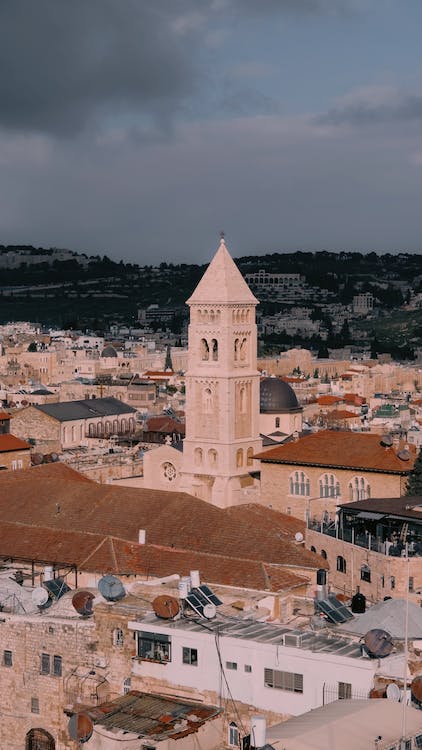Tel Hadid is an archeological site in Israel located on an isolated hill, 147 meters (or 482 feet) above sea level south of a tributary of Ayalon River (Nahal Ayalon).
Standing at Tel Hadid is the remains of an ancient settlement town. It is usually identified with the biblical city of Hadid (“Haditha” in Greek). The earliest ruins discovered at the hill are Middle Bronze Age-era tomb.
The settlement is mentioned in the list of settlements occupied by Egyptian pharaoh Thutmose III during the 15th century B.C. Another settlement established under King Judah (7th and 8th centuries B.C.E.) has also been identified at Tel Hadid.
Archaeological explorations at Tel Hadid primarily consist of “salvage excavations” (or in North American terms, “rescue excavations”). During an excavation there in 1955, a mosaic floor was discovered — it was probably from the 6th century C.E., depicting a ship sailing the Nile river, containing the inscription “Igifatus” (Egypt), among other elements.
One of the major excavations at Tel Hadid took place from 1995 to 1997 during which extensive remains were unearthed. The earliest remains were identified as dating back to the Middle Bronze Age. The settlement reached its peak during the Iron Age until its downfall, from which the Assyrian Empire was established. Other unearthed remains were dated to the Persian Period until the Modern Era.
Tel Hadd provides an excellent view point overlooking the Lydda Valley and the Tel Aviv Metropolitan Area (as you can see in the main image). Tel Hadid is located on the first ridge of hills area rising east of the coastal plain, and is just behind the Ben Gurion International Airport. The Tel Hadid area was populated for thousands of years and includes many remains from different periods.
Tel Hadid is also the southern edge of the largest “green lung” of central Israel – the Ben Shemen Forest which is an excellent starting point for relaxing, hiking and biking.
Getting to Tel Hadid
Drive on route 444 and turn east 2 km north of the junction with route 443.
The park road will take you into the site.
You can go to Tel Hadid by foot or by car. The level of difficulty going up there is considered mild to moderate.
Near Tel Hadid
The entrance road to Tel Hadid, at the start of the route near Route 444, is also the road to a memorial park for the fallen soldiers of the maintenance corps at the foot of the hill.
You can visit there all seasons, but the most recommended seasons are autumn, winter and spring when it is not too hot. You can also see the flowerbeds in different stages, changing colors as the seasons change.
